First things first; let’s say a small prayer to whatever powers that be — up there and down under — that Lion didn’t win any ‘Oscars’ at the 89th Academy Awards. The Dev Patel starrer had been nominated for 5 of them, namely, Best Picture, Best Supporting Actor, Best Supporting Actress, Best Music, Best Writing, and Best Cinematography. Thankfully it won none.
Had this movie won any awards at the Academy Awards, we would have been badgered with “Indian-ness”, despite the fact that the movie is produced by a foreign studio, directed and helmed by a foreign crew and even the actors (except for a few tit-bits and the chief protagonist) are all foreigners.
Yet, the foreign DNA of the film is not why I wish the film the failed, there’s no pseudo nationalism at work. The reason, I harbour such feelings is, because undoubtedly Lion is a much below-par movie. The whole excitement around it has taken me by surprise. Built largely on the Slumdog Millionaire construct, Lion is purported to be a true-story. Sadly it is little else but a stereotypical production that lacks empathy or understanding on the topic or the people that it portrays.
Ostensibly, Lion is a tale of a 7-year-old boy named Saroo as he gets separated from his family and brother, travels some 1200 kms unknowingly across India before landing in Kolkata, and is finally adopted by a set of parents in Tasmania, Australia. After a gap of 25 years, Saroo Brierley traces back his past on Google Earth and reunites with his family. This is an epic journey that has its bearings in truth.
In real life, Saroo retraced his steps in the sleepy town of Khandwa in 2012, and his story was well covered by the media at large, from BBC to Times of India, everyone featured this extraordinary human tale of emotions and resolution.
Now, as any astute person, Saroo decided to cash on the new-found fame and he quickly penned a book on his own journey, ‘A Long Way Home’. The book was published in 2013, and by 2016, Lion was released. It was all done in a jiffy, so as to speak.
While I have yet to read the book, I did watch the film and it really stuck me as another Schadenfreude Millionaire tale that had appeared on screen some years back. What essentially befuddles me is the manner in which India is still portrayed especially by international film-makers; a shoddy, poor, dirty, degraded place where crime and criminals abound. Continue reading

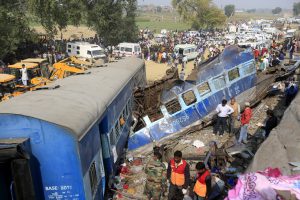 times, almost equally in casualties as that of Gyaneshwari Express in which some 150 had died in 2010, when the train had been derailed by Maoists in West Bengal. The scale of deaths and injuries makes the current accident, one of the worst in the history of Indian Railways. Sadly, going by the things as they are, this accident won’t certainly be the last “major one” in India’s transport sector.
times, almost equally in casualties as that of Gyaneshwari Express in which some 150 had died in 2010, when the train had been derailed by Maoists in West Bengal. The scale of deaths and injuries makes the current accident, one of the worst in the history of Indian Railways. Sadly, going by the things as they are, this accident won’t certainly be the last “major one” in India’s transport sector.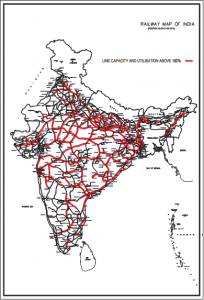 railways have a network of more than
railways have a network of more than 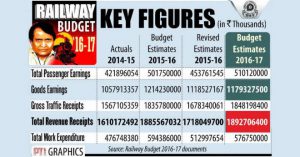 to come. Indian Railways (IR) is right now like a patient that is afflicted with tuberculosis, the symptoms are all there. But if we only concentrate on the manifestation and ignore the ailment, the patient is going to eventually die. The prognosis for IR is similarly dour. And here’s why:
to come. Indian Railways (IR) is right now like a patient that is afflicted with tuberculosis, the symptoms are all there. But if we only concentrate on the manifestation and ignore the ailment, the patient is going to eventually die. The prognosis for IR is similarly dour. And here’s why: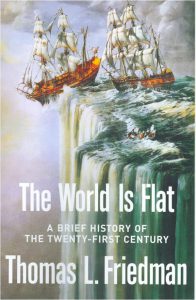 quite a simple book talking about the state of affairs of the world, especially in connection with globalization. The book speaks of how the world is coming together as one big place from Denver to Dalian to Bangalore. It was meant to be a chronicle of our times, and a sort of prognosis of the things that are yet to come. Friedman reaped rich rewards from his book, traveling across the globe, giving talks and discussing the subject.
quite a simple book talking about the state of affairs of the world, especially in connection with globalization. The book speaks of how the world is coming together as one big place from Denver to Dalian to Bangalore. It was meant to be a chronicle of our times, and a sort of prognosis of the things that are yet to come. Friedman reaped rich rewards from his book, traveling across the globe, giving talks and discussing the subject. and Mexico for the “greatest jobs theft” in the history of the world. According to him, Indians and other nationals were gobbling up American jobs. Indians were no more a threat, but rather scheming thieves that stole and cheated. Now how could that narrative change so quickly? What happened to that ‘flat world’ that was meant to be equal for all
and Mexico for the “greatest jobs theft” in the history of the world. According to him, Indians and other nationals were gobbling up American jobs. Indians were no more a threat, but rather scheming thieves that stole and cheated. Now how could that narrative change so quickly? What happened to that ‘flat world’ that was meant to be equal for all 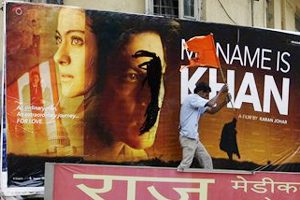 preventive custody, and even warning Uddhav Thackeray of dire repercussions. The battle lines were drawn, a defiant SRK refused to apologise, whereas the Shiv Sena would have nothing less than it. As the battle progressed, the saffron party seemed to lose steam and was looking for a way out of the imbroglio, with its leader talking about a “public apology” as an acceptable truce. That did not come though, and the film was released among heightened tensions. As is the case with quite a few SRK movies, MNIK earned its crores, got all the awards, and was declared a hit.
preventive custody, and even warning Uddhav Thackeray of dire repercussions. The battle lines were drawn, a defiant SRK refused to apologise, whereas the Shiv Sena would have nothing less than it. As the battle progressed, the saffron party seemed to lose steam and was looking for a way out of the imbroglio, with its leader talking about a “public apology” as an acceptable truce. That did not come though, and the film was released among heightened tensions. As is the case with quite a few SRK movies, MNIK earned its crores, got all the awards, and was declared a hit.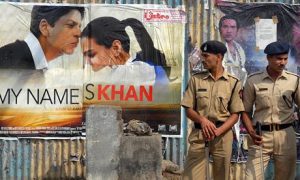 diplomatic mumbo-jumbo, here and there, but these were largely from the smaller actors, the ones people call character artists. The big shots of Bollywood were dumb-founded, much like their likeness that represents them at Madame Tussauds and elsewhere. The Khans, the Kapoors and even the Bachchans, kept mum. Bollywood, the big family of superstars, was more like a petrified herd of goats. The kind that will retreat into the barnyard at the sign of first trouble.
diplomatic mumbo-jumbo, here and there, but these were largely from the smaller actors, the ones people call character artists. The big shots of Bollywood were dumb-founded, much like their likeness that represents them at Madame Tussauds and elsewhere. The Khans, the Kapoors and even the Bachchans, kept mum. Bollywood, the big family of superstars, was more like a petrified herd of goats. The kind that will retreat into the barnyard at the sign of first trouble.